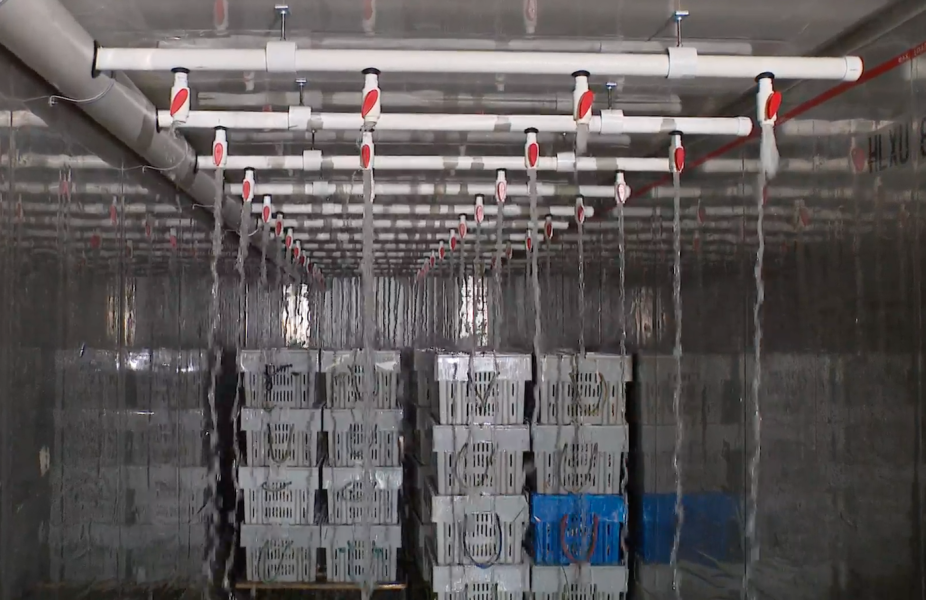UPEI engineering students design lobster holding tank for local company

A collaboration between UPEI’s Faculty of Sustainable Design Engineering (FSDE) and Bait Masters, a growing Prince Edward Island company, has resulted in a creative, cost-effective, and sustainable solution that is helping the company expand its lobster storage capacity threefold.
When Bait Masters, founded in 2017 by Mark Prevost and Wally MacPhee, experienced rapid growth and needed to double the capacity of its holding tank system for lobsters, they turned to Innovation PEI for support. Innovation PEI recommended that they talk to Wayne Simmons, business development engineer at the FSDE, about partnering with UPEI’s engineering students through the faculty’s design clinic program, an initiative that pairs students with real-world industry challenges.
During the 2023–2024 academic year, under the guidance of faculty and staff, then fourth-year students Victoria Yates, Jerry Oriade, and Taylor Gallant developed a prototype sustainable spray or “rainfall” spray storage tank system that not only met the company’s goals but exceeded them. The system allows the storage facility to hold up to 30,000 pounds of lobster and uses less water, electricity, and manual labour than traditional tanks.
“The students followed the sustainable engineering design process of defining the project scope, researching existing technologies, applying their technical knowledge, identifying knowledge gaps, designing innovative solutions, developing drawings, and building and testing a prototype,” said Simmons. “Their challenge was to find a way to safely store lobsters for up to 48 hours between arrival at the pier and long-haul transport.”
To tackle this problem, the students identified a key knowledge gap: how to keep lobsters healthy while in storage. With guidance from experts at the Atlantic Veterinary College (AVC), they learned that maintaining wet conditions and high levels of dissolved oxygen are essential to the health of the animals. But without being able to test the spray system on live animals, the students devised a clever alternative—using long narrow balloons to simulate lobsters during their spray system tests.
“It’s fantastic to watch students come up with these kinds of creative solutions,” said Simmons. “They’ve learned so much by fourth year, and seeing them innovate, develop prototypes, and test ideas like this is really rewarding.”
Bait Masters took the students’ tested design and put it into action. Prevost and MacPhee hired a contractor to build the system using the students’ drawings. The results exceeded expectations as storage capacity tripled, and the company’s payback period dropped from four years to under two.
Prevost and MacPhee said they would like to market the new rainfall tank system because it is a Canadian innovation, and, until now, there have not been many changes in the storage methods used for lobster and other shellfish.
“This is a great example of how student innovation can directly impact industry,” said Simmons. “Our students are solving real problems and delivering real results even before they graduate.”
UPEI’s Faculty of Sustainable Design Engineering regularly partners with local and regional businesses through its design clinic program, giving students valuable hands-on experience while helping companies innovate.
The 2023–2024 project was not the first time Bait Masters has partnered with UPEI. In 2019, Dr. Krishna Thakur, assistant professor in the AVC Department of Health Management, tested a bait sausage developed by the company in a field study during the PEI lobster seasons. The study found that the bait sausage catches as many lobsters as traditional baits such as herring and mackerel.